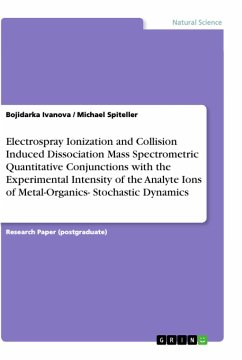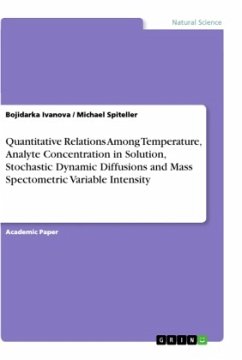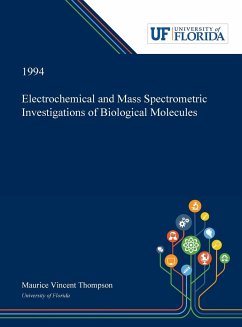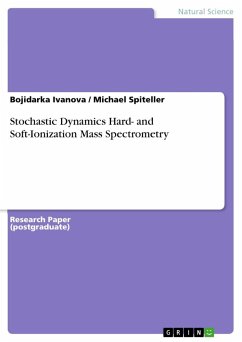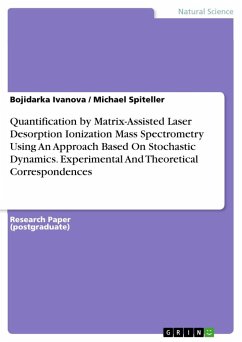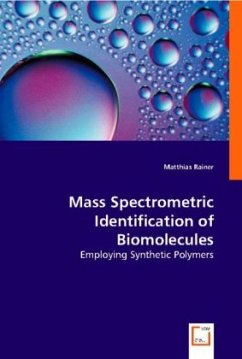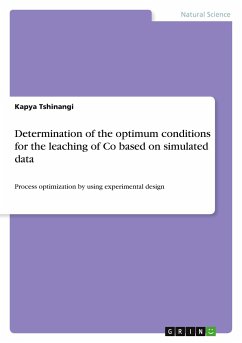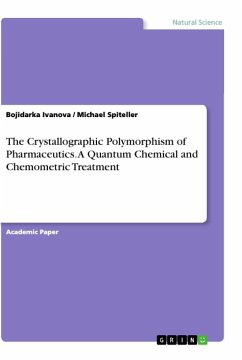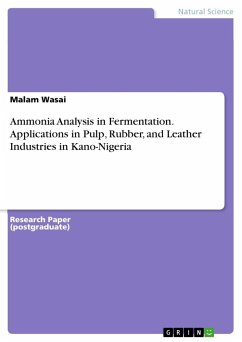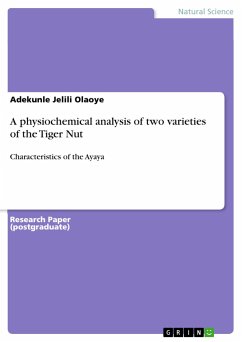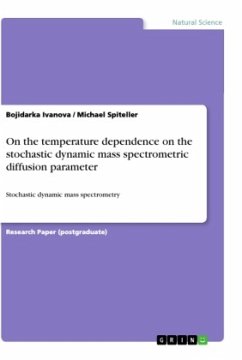
On the temperature dependence on the stochastic dynamic mass spectrometric diffusion parameter
Stochastic dynamic mass spectrometry

PAYBACK Punkte
0 °P sammeln!
Research Paper (postgraduate) from the year 2019 in the subject Chemistry - Analytical Chemistry, University of Dortmund (Institut für Umweltforschung), language: English, abstract: The major aim of this work is to introduce our new model equation connecting among the so-called stochastic dynamic diffusion coefficient "DSD," the experimental mass spectrometric outcome intensity "I" and the experimental parameter temperature "T," respectively. A closer review of our contributions, so far, to the domain of the "stochastic dynamic mass spectrometry" has shown that we have developed a functional ...
Research Paper (postgraduate) from the year 2019 in the subject Chemistry - Analytical Chemistry, University of Dortmund (Institut für Umweltforschung), language: English, abstract: The major aim of this work is to introduce our new model equation connecting among the so-called stochastic dynamic diffusion coefficient "DSD," the experimental mass spectrometric outcome intensity "I" and the experimental parameter temperature "T," respectively. A closer review of our contributions, so far, to the domain of the "stochastic dynamic mass spectrometry" has shown that we have developed a functional relationship between the DSD parameter and the mass spectrometric intensity. It is . Its universal applicability to a set of soft-ionization mass spectrometric methods has been evidenced within a small-scale research on correlation between theory and experiment, which has been tested by chemometrics. As a corollary, there has been concluded that the temporal behaviour of the experimental massspectrometric intensity obeys a certain law and this law is the equation shown above. The fundamental differences in the functional relationship written before and our new innovative model lies in that we account for the effect of the temperature on the DSD parameter and the experimental mass spectrometric measurable variable. The roots of the latter model are again to stochastic plausibility theories, focusing the attention on the Gillespie's exact numerical solution of the Ornstein-Uhlenbeck process according to the forward Fokker-Planck equation (or the forward Kolmogorov equation) and the theory of continuous Markov processes. We shall not only introduce, a new functional relation, but also we shall provide persuasive empirical proofs of that the new formula is true. The contribution explores our own experimental mass spectrometric data. The discussion, herein, provides sufficient justification, that the content of the work would be of interest in MSc students specializing in"Advanced methods for the Analytical Chemistry" or "Environmental Chemistry;" students specializing in "Theoretical and computational chemistry;" and PhD students or researchers developing the mass spectrometric methodology.




